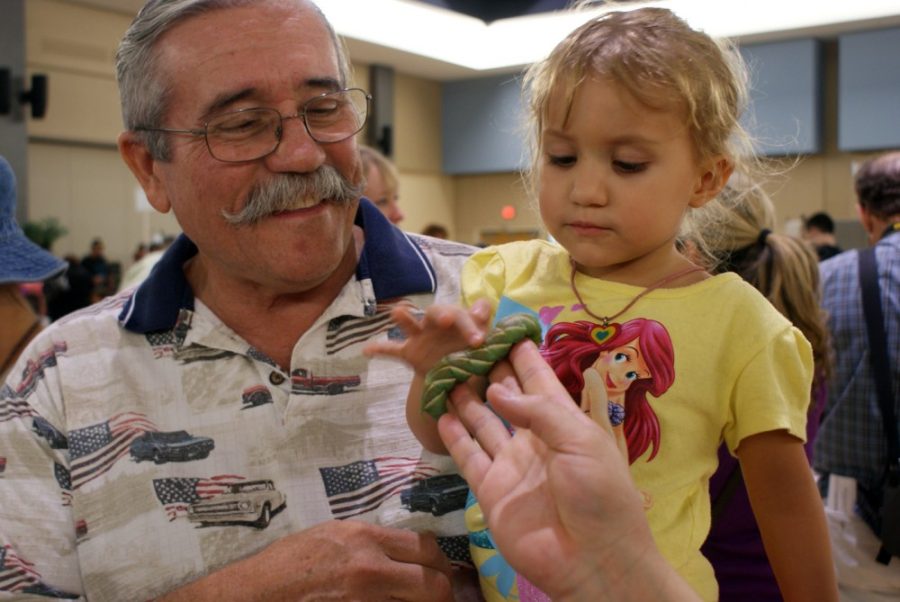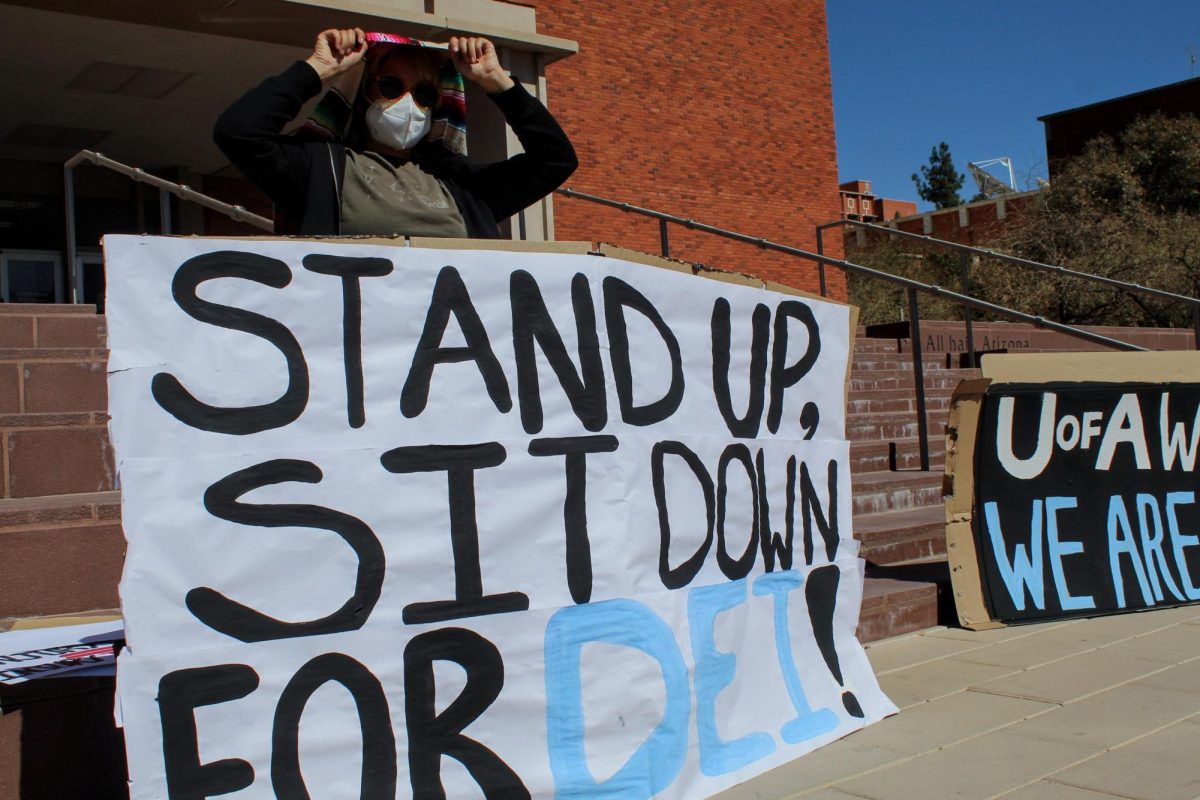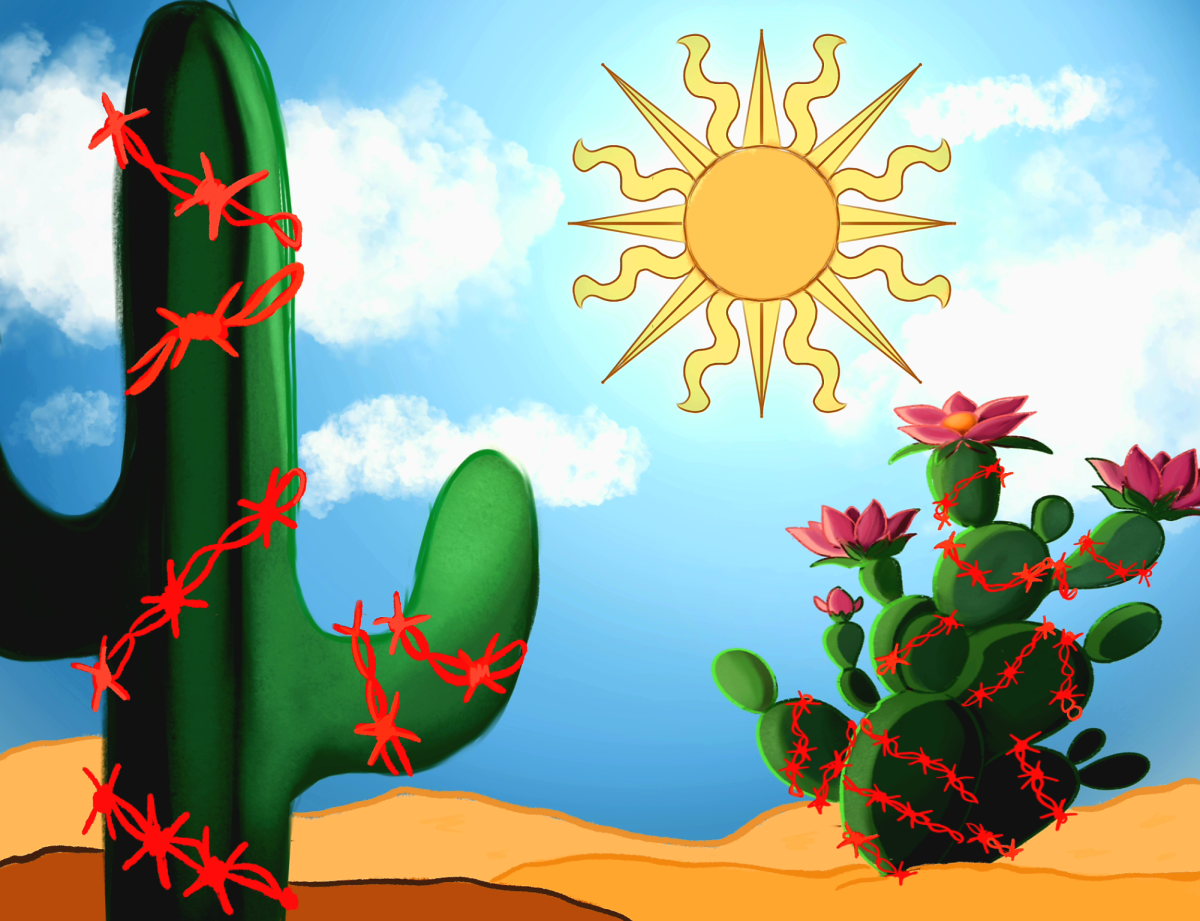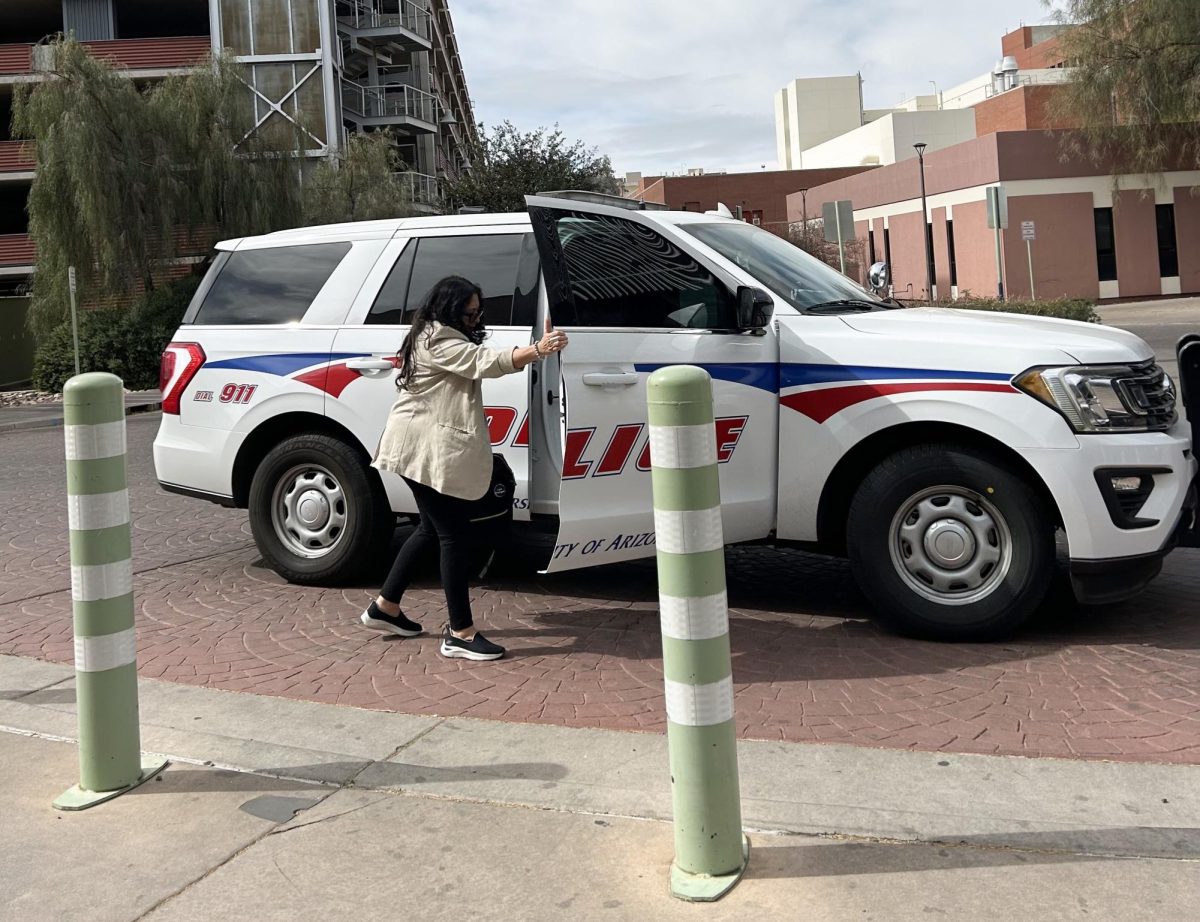The Arizona Insect Festival drew bug enthusiasts of all ages for a day filled with curiosity and creepy crawlers at the UA on Sunday.
The event, held in the Grand Ballroom in the Student Union Memorial Center, featured more than 20 booths providing interactive information about insects and even the chance to hold or eat one. There were also bug talks, where attendees could learn more about bugs in a classroom type setting.
Kathleen Walker, an assistant professor in entomology and one of the event coordinators for the Arizona Insect Festival, said the goal was to show attendees that bugs are not a scary part of the world.
“There’s only so much teachers can do, but parents are so important to creating that connection to nature and that excitement for science,” Walker said.
A key feature of the event was the Arthropod Zoo. Arthropods are bugs that have an exoskeleton and have to molt, according to Carl Olson, a retired curator of the Insect Collection at the UA.
There were many community organizations that had booths at the event as well, such as the Tucson Botanical Gardens, which hosted an exhibit called Butterfly Magic. Students said they were able to learn about different types of bugs living in Arizona at the event.
“Insects and any other festival like this are really interesting no matter what your major is,” said Nicole Grimes, a neuroscience sophomore.
In addition to learning about and holding bugs, patrons could also taste them mixed with ordinary food, such as baked in a cookie or placed on a chip.
Steve Beall, a biology and environmental science teacher at Luz-Guerrero Early College high school, tried a tortilla chip with a topping of salsa, garlic, oil, onions and mealworm larvae.
“It’s like, a toasty, nutty flavor. You wouldn’t guess it’s an insect,” Beall said. “I would think it would be almost some kind of … snack food or a nut, even.”
Beall said he was looking for things to bring back to his classroom and added that the bug meal was one of them.
“It’s free knowledge, you might as well come and they’re really interactive,” Grimes said. “The people here have been really, really nice and more than happy to explain everything they know about their research.”









